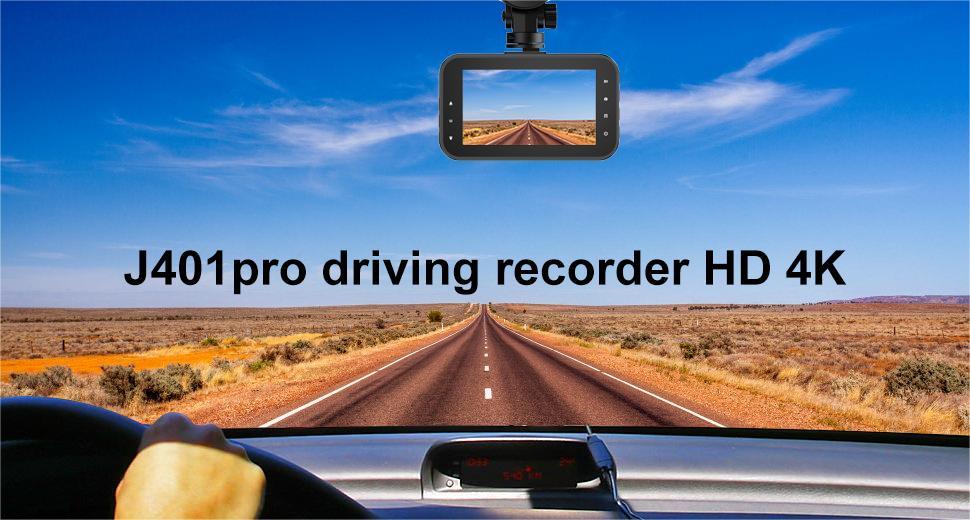As projectors have gradually come into the public's view, more and more netizens have given up the bulky LCD TV monitors when watching movies and TV plays and have chosen to use projectors instead. If we want to buy a projector for home or outdoor, what should we know about the projector? Let's move on.
Brightness of projector
First of all, we need to know the brightness of the projector, which is the light emitted by the projector. Brightness is an important indicator of projector performance. The higher the brightness, the clearer the projected image.
The commonly used luminance units are ANSI lumens and lumens. What is ANSI Lumens? ANSI lumen is the unit of luminous flux formulated by the American National Standards Institute (ANSI), which represents the brightness of the image projected by the projector, and lumen refers to the brightness of the projector light source.
It is generally believed that the ANSI lumen is used to represent brightness. The higher the ANSI lumen is, the clearer the projection image is, and it can be seen even in the daytime. Therefore, the ANSI lumen should be used as a reference item when purchasing a projector.
Select the lumen size that the home projector should refer to
So if we want to buy a home projector, how much ANSI lumen should we choose?
The brightness of the projected image of most projectors is between 100 lumens and 30,000 lumens, and home projectors with a brightness of less than 10,000 lumens are generally suitable for viewing at night when the lights are completely turned off. If you choose a projector with lumens below 10,000 lumens, it means that in most cases we can only use this projector in a relatively dark environment. This is equivalent to a very atmospheric home theater.
And if you need to use the projector in the daytime or under bright conditions, this is generally not recommended, or you need to buy a laser short-throw projector; but we will not discuss this for the time being today. For ordinary families, 10,000 -15,000 lumens The brightest DLP/LED projector is perfect, and XGODY X1 can also restore the picture quality of more than 1080P under brighter conditions.
Some friends may think that if the ANSI or lumens are not high enough, the projector image will be blurry; or think that as long as the ANSI is high enough, I can see more clearly and have a better visual experience.
So it would be better if the projector's ANSI is higher? But yes, but also no.
Under normal circumstances, the higher the ANSI of the projector is, the better, but it means that the projector with high ANSI can play more clearly in a brighter environment.
And we have learned a concept before: ANSI is generally used to represent the image brightness of the projector. For a home environment, the placement of the projector is generally low, so it is easy to see the lens and light source of the projector. The problem is that we often see the lens of this projector accidentally, and the brightness of the light source is too high, which will cause some damage to the eyes. Therefore, there is no need for a home projector to be too high. ANSI is ok at 100-400, which is completely sufficient.
Therefore, when choosing projectors, we do not recommend choosing projectors with high ANSI lumens, because projectors with more than 3000 ANSI lumens will cause certain irritation to the eyes. At the same time, projectors with high ANSI lumens are often expensive, which is not cost-effective if used as home projectors. In life, projectors with more than 3000 ANSI lumens are more suitable for study and work in most cases.
To sum up, when choosing a home projector, we should consider all factors. It is not recommended to choose a projector with too high an ANSI lumen or a projector with too low an ANSI lumen.
The ANSI lumen limit of the home projectors we purchased is about 1500ANSI lumens to 2500ANSI lumens. The projectors within this ANSI lumen range have two advantages: first, the price of such projectors is not too expensive, which will not exceed our price range; second, the brightness of the light source is moderate, which will not cause too much damage to the eyes, and can also have a better visual experience.
Generally speaking, the viewing visual effect of about 2500ANSI lumens will be better, the color performance and picture quality will be better during night projection, the picture will not be blurred during the day and when the light is turned on, and it will not cause strong irritation to the eyes. If you need to buy a projector and have a sufficient budget, it is recommended to buy a projector of about 2500ANSI lumens, which has the best cost performance.
Contrast of projector
Secondly, we need to understand the contrast of the projector. The difference is the ratio between black and white. The higher the contrast, the more natural and rich the image color of the screen. If the contrast is low, the screen will show a gray visual effect. Therefore, if we need to buy a projector, we'd better choose a projector with high contrast.
Select the contrast that the home projector can reference
So, how much contrast should we choose? The contrast of different types of projectors has different reference ratings. The nominal contrast of most home projectors using LCD projection technology is 400:1. The nominal contrast of most home projectors using DLP projection technology is 1500:1. When selecting projectors, we can refer to these two types of projectors to select products that are suitable for us.
Resolution of projector
Third, we need to know the resolution of the projector. Among the movies and TV plays we often watch, 1080P TV plays are often more high-definition than 720P TV plays. Resolution often means the clarity of projection pictures. For visual experience and beautiful pictures, we tend to buy a projector with a higher resolution.
Select the resolution that the home projector can reference
When choosing a home projector, what resolution should we choose?
There are two common resolutions of projectors: standard resolution and maximum compatible resolution. The resolutions of mainstream projectors are 1080P, 4K, and 720P. The higher the known resolution is, the clearer the picture quality is. The resolution of 720p and below is common in films and TV plays before 2010, and the visual effect of picture quality is relatively poor. The resolution of 720p and below is somewhat backward for the current era of high-definition vision, so it is not recommended to choose a resolution of 720p or below.
To sum up, if our budget is sufficient, we can generally choose a projector with 1080p resolution, and if our budget is sufficient, we can choose an ultra-clear 4k resolution.
Note that if 1080P and 4K resolution projectors are selected, it is necessary to distinguish between compatible resolution and standard resolution. It is compatible with resolution. Generally, it only supports decoding, which means it can play 4K movies and TV sources, but the resolution of the actual movie and TV play cannot be confirmed, which may be 1080p or 720p. Only the standard resolution is the resolution of the projector itself, that is, the effect you can see with the naked eye. Therefore, whether 1080P or 4K is selected, the standard resolution should be selected.
Display chip of projector
Fourth, we need to understand that the DMD display chip of the projector is related to its resolution. The larger the DMD display chip is, the higher the resolution.
Select the DMD display chip size that the home projector should refer to
At present, there are three kinds of display chip sizes commonly used in home projectors: 0.23DMD, 0.33DMD, and 0.47DMD.
- The 0.23DMD chip corresponds to the native 480P resolution and is often used for low-end home projection.
- 0.33DMD chip corresponds to 720P resolution and is mostly used on some entry-level projectors.
- The 0.47DMD chip corresponds to 1080P resolution. It is used in some high-end projectors, and sometimes also used in 4k projection.
Because today's consumers pay more attention to the image quality of projectors, most projectors use 0.33 DMD and 0.47 DMD display chips. These two chip sizes bring better projector effects, which can meet consumers' pursuit of image quality.
Projector body memory
Fifthly, we need to know the main memory of the projector, which is divided into running memory and storage capacity. The larger the working memory of the projector, the less stuck it is in use, and the larger the storage capacity of the projector, the more files can be stored.
Select the body memory that the home projector can refer to
How many internal memory projectors should we choose? If the operating memory of the projector is too small, we will get stuck when using the projector. If the storage memory capacity of the projector is not large enough, likely, we will not store enough movies. It is possible that after downloading a movie, the storage capacity will be full, which is very inconvenient for us to use. Therefore, when selecting the body memory, we'd better choose more than 2G running memory and more than 16G storage memory.
Other auxiliary functions of the projector
Finally, we need to know several functions of the projector. These functions can help us better use the projector.
The first function is an automatic trapezoidal correction. If the picture is jittery or unbalanced, the automatic trapezoidal correction function can make the projection picture square and make our visual experience better.
The second function is autofocus. If the projector is out of focus at the beginning of the projection, autofocus can better lock the picture and make it clear.
The third function is voice assistant. Some projectors have voice assistants. It is very convenient to call up an AI voice assistant without using a remote control.
Of course, the more auxiliary functions the projector has, the more convenient it will be for us to use. Among them, the most brilliant projector for 2022 is the creative addition of the Android smart system, so that the projector can replace the current home TV. And XGODY has re-optimized between affordable projectors and home projectors so that it can get a high-quality smart projector at a favorable price.
Smart projectors of purchase guide recommend from XGODY
The two products recommended below are both equipped with Android TV system and Full HD projection effect; the most important thing is that these two products are very cost-effective.
- XGODY Native 1080P Projector 4K - X1 With Android 9.0 TV & Dolby Sound, For Wireless Outdoor Movies Night
- XGODY Android Mini Smart Projector - T01 With WiFi Bluetooth Outdoor Video Pico Projector Support 1080P
Among them, XGODY X1 is a native 1080P, and genuine support 4k projector. In the test, XGODY's X1 smart projector can achieve a picture quality close to 8K, and it can truly restore 4K video.
Although the T01 mini smart projector is not as good as the X1 in terms of definition, its small size and the combination of Android TV9.0 are indeed called portable projectors. XGODY T01 is an upgraded model that can support 1080P video quality.




Leave a comment
All comments are moderated before being published.
This site is protected by hCaptcha and the hCaptcha Privacy Policy and Terms of Service apply.